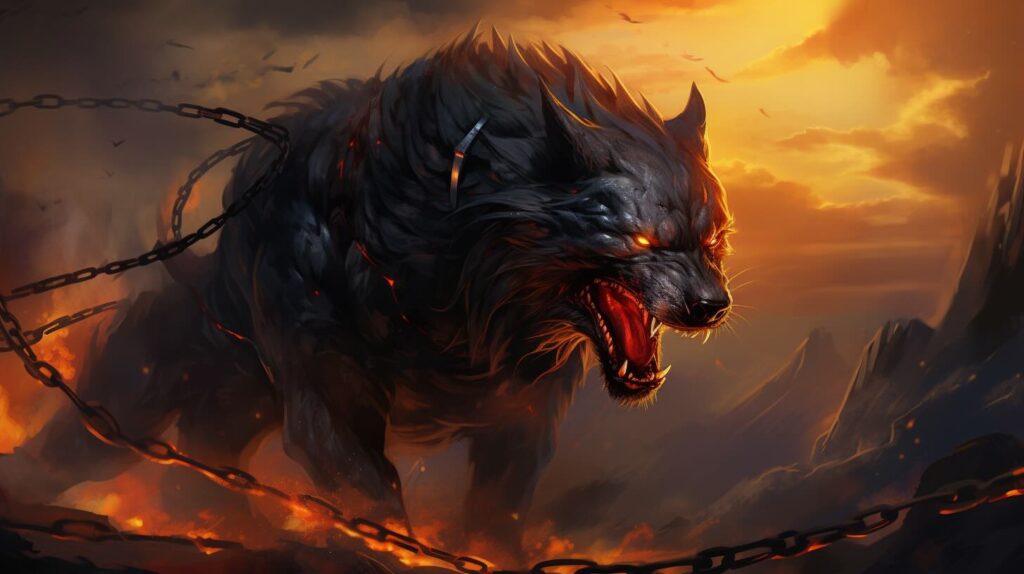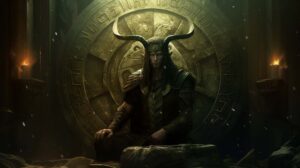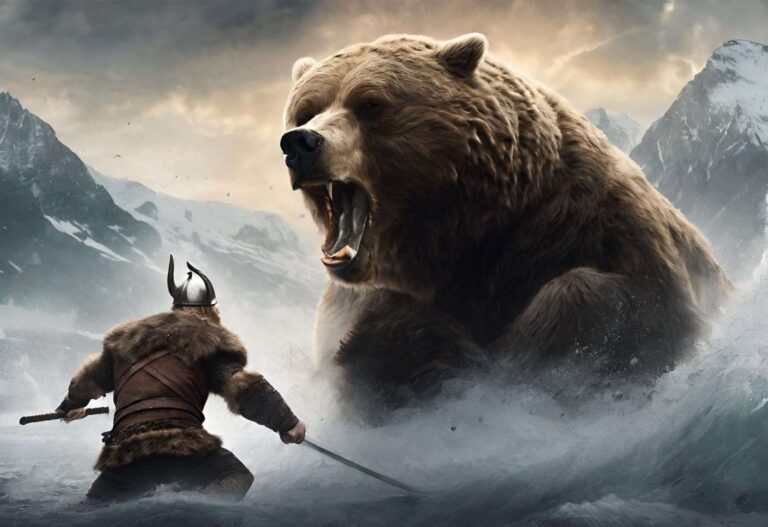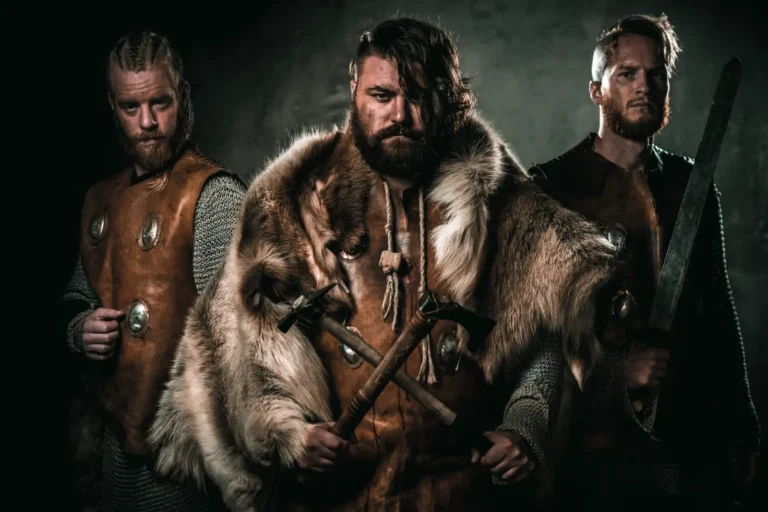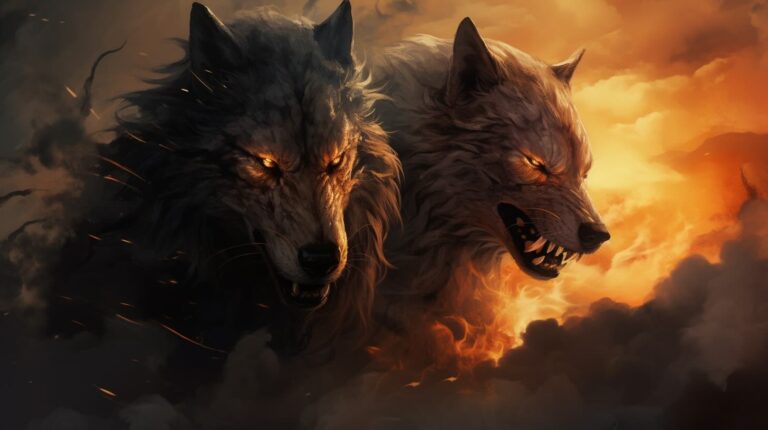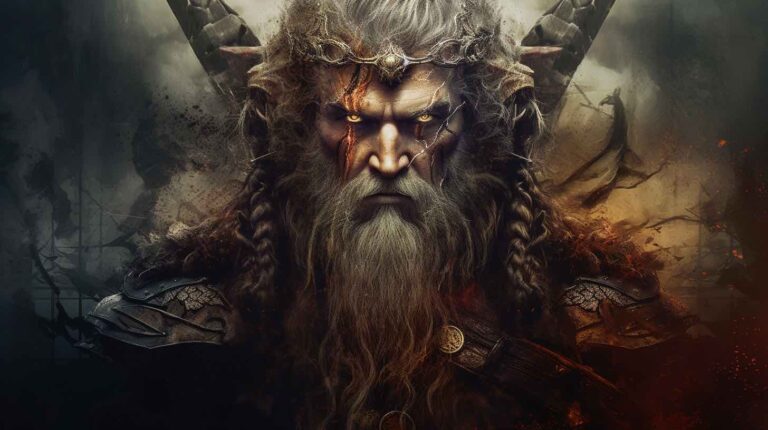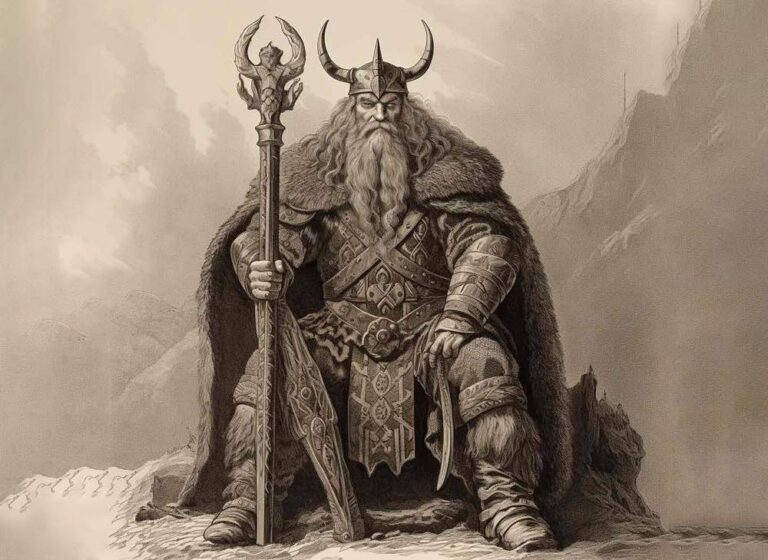In the vast tapestry of Norse mythology, wolves hold a significant and multifaceted role. From cosmic guardians to embodiments of chaos and foretellers of doom, these creatures traverse the mythic landscape, leaving an indelible mark on the lore of the North. In this exploration, we delve into the tales of Fenrir, Hati and Skoll, Garmr, and Freki and Geri. We unravel the rich symbolism and captivating narratives surrounding these wolves in Norse Mythology.
Fenrir: The bound wolf
At the heart of the wolf tales stands Fenrir, a colossal and fearsome wolf, often referred to as the “Fenris Wolf” or “Fenrir.” Born of the trickster god Loki and the giantess Angrboða, Fenrir is a creature of immense strength and prophecied to play a pivotal role in Ragnarök, the Norse apocalypse. His destiny intertwines with the gods as he is bound by the magical chain Gleipnir until the fateful day when he is foretold to break free, unleashing chaos upon the cosmos.
For a more detailed exploration of Fenrir’s story, you can read this article. Also, if you want tor read about Loki’s other children you can click here.
Hati and Skoll: Pursuers of the sun and moon
Fenrir had two children: Hati and Skoll. In Norse mythology, Hati and Skoll, are celestial hunters pursuing the sun and moon. Hati chases the moon, while Skoll pursues the sun. It is prophesied that during Ragnarök, they will catch their prey, triggering a series of cataclysmic events. These wolves symbolize the cyclic nature of time, as day and night are ceaselessly pursued and consumed.
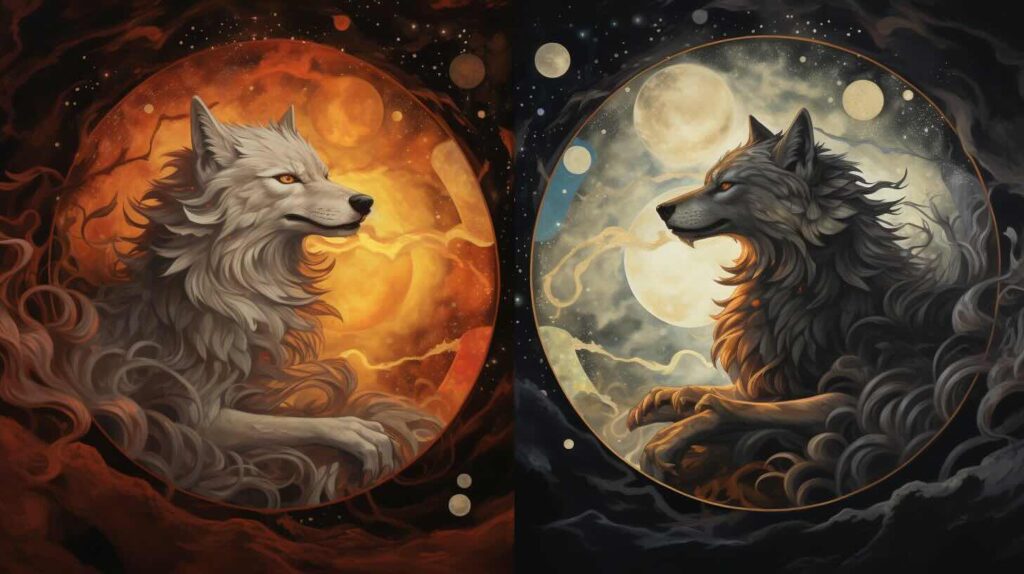
Garmr: The guardian of Helheim
Garmr is the wolf that is guarding the realm of the dead: Helheim. Described as a blood-stained guardian, Garmr is destined to break free during Ragnarök, contributing to the chaos of the final battle. Garmr’s ferocity and association with the underworld underscore the perilous journey awaiting those who enter the realm of the dead.
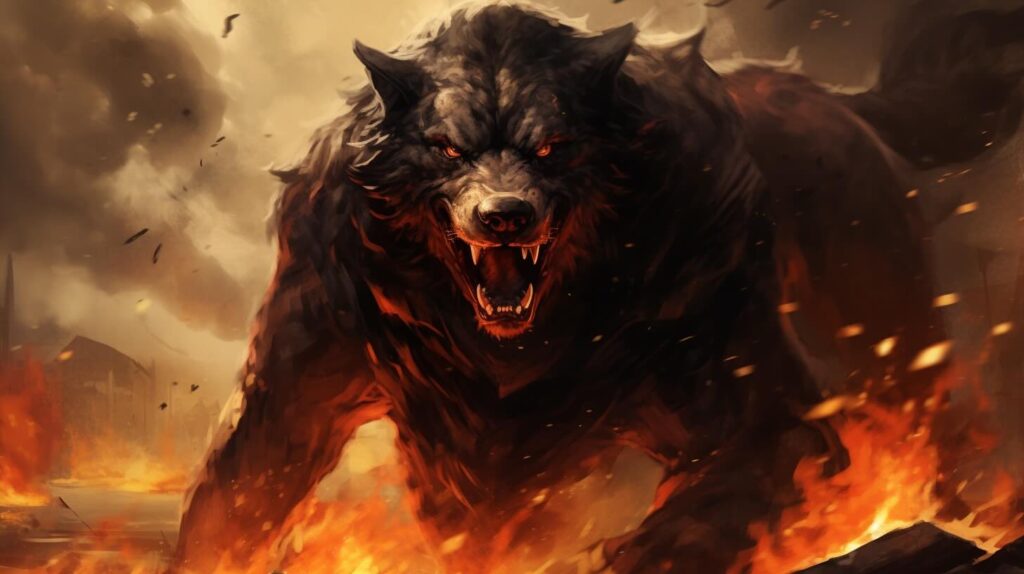
Freki and Geri: Odin’s wolves
Odin, the All-Father, is accompanied by two wolves, Freki and Geri, whose names mean “ravenous” and “the greedy one” respectively. These wolves sit by Odin’s side in Valhalla, the great hall of the fallen, where Odin gathers warriors who have died honorably in battle. Freki and Geri are symbols of Odin’s connection to the wild and his role as a chooser of the slain. Read more about their symbolism to Odin in this article.
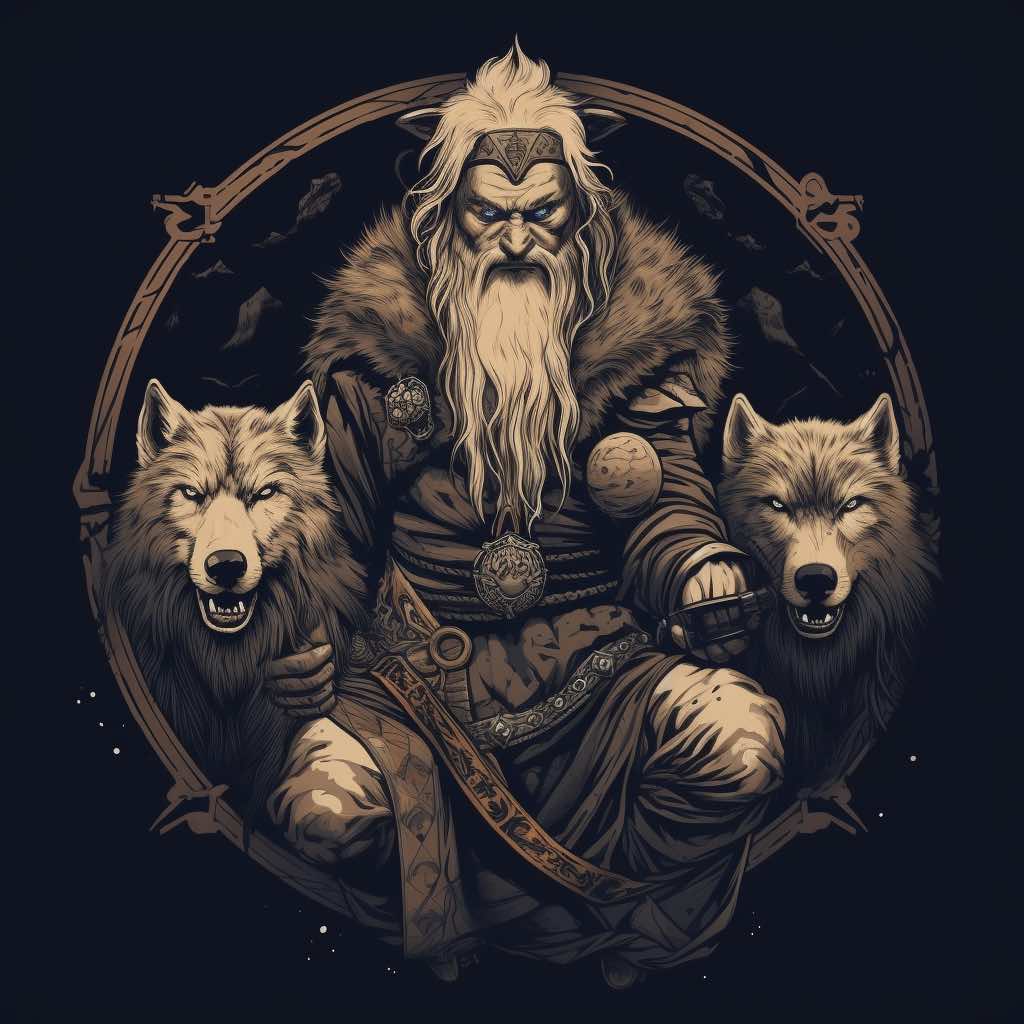
Wolves in Norse mythology: symbolism
Wolves in Norse mythology embody a duality of characteristics. On one hand, they are agents of chaos, heralding the destruction of Ragnarök. On the other, they serve as loyal companions and guardians to gods. This duality mirrors the complex nature of the natural world, where beauty and danger coexist.
Wolves in Norse mythology are more than mere creatures; they are symbols of cosmic forces, guardians of the underworld, and companions to the gods. Fenrir, Hati and Skoll, Garmr, Freki, and Geri, each contribute to the intricate web of Norse cosmology, embodying both order and chaos.
